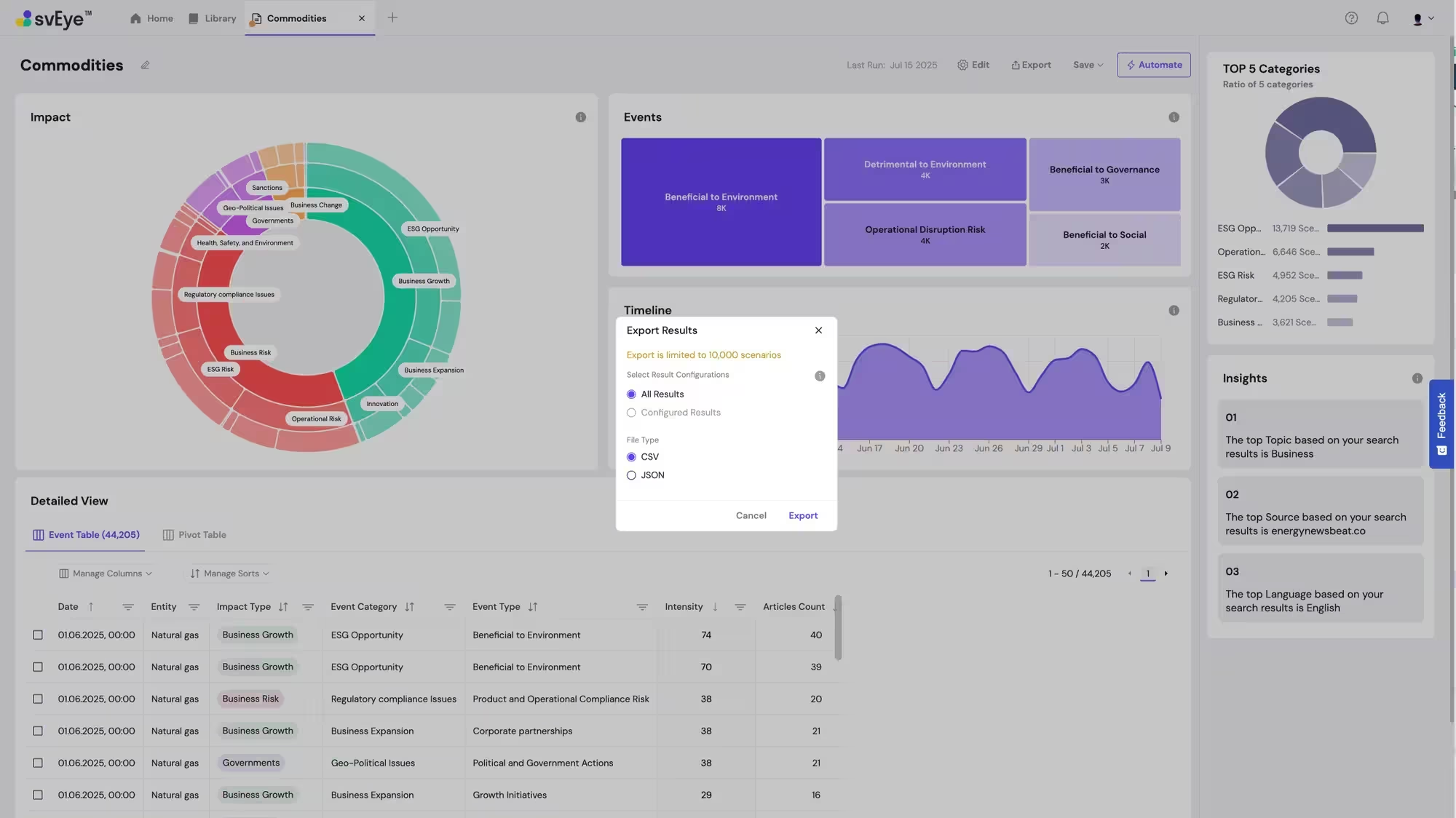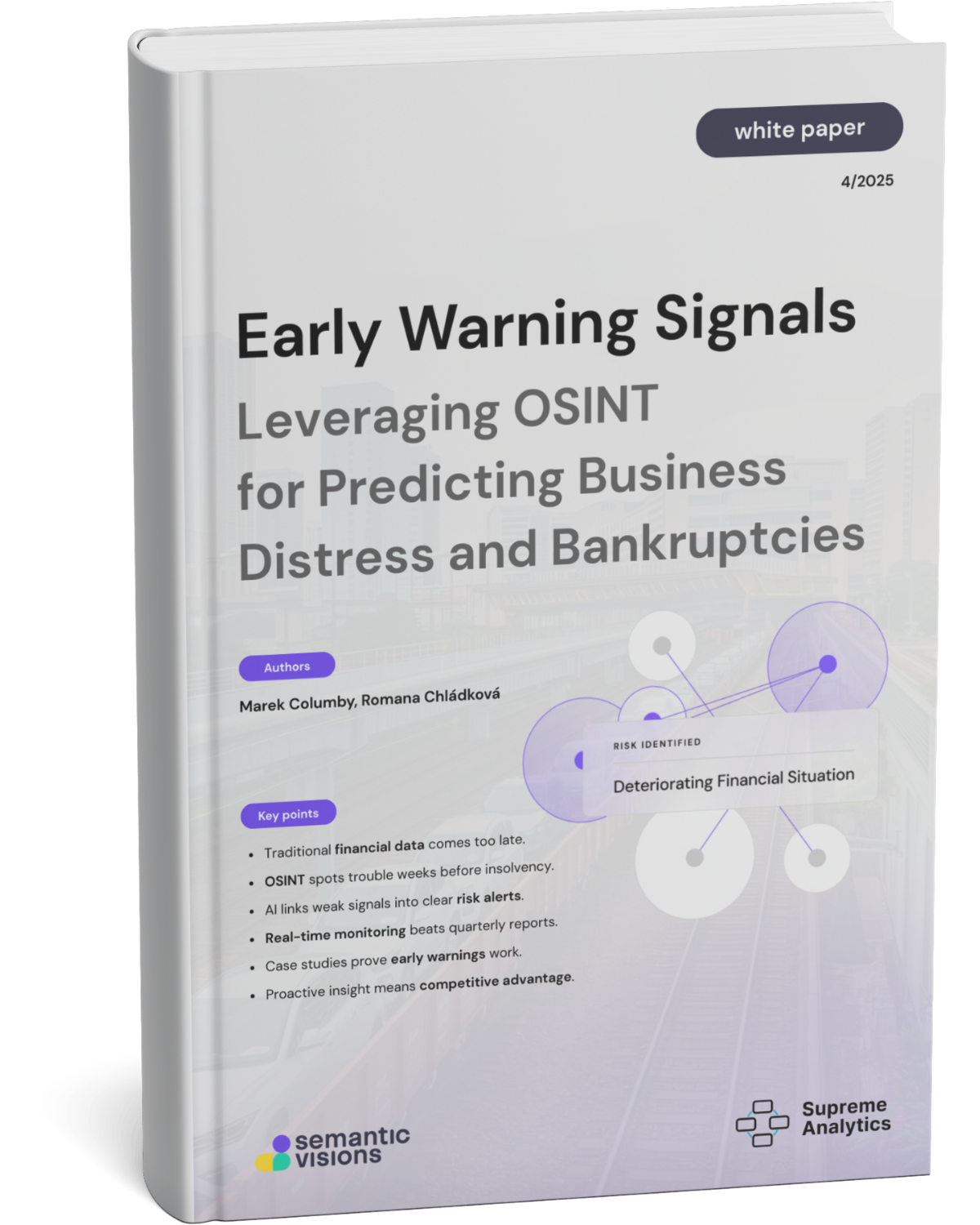Business continuity is about keeping operations running during disruption, business resilience takes it further by helping organizations anticipate risk, adapt under pressure, and emerge stronger. This hub explores how to build both, using real-time signals, scenario planning, OSINT, and stress-tested strategies that turn uncertainty into advantage.
Table of Contents
- Defining Business Continuity
- Impact Analysis & Stress Testing
- Liquidity & Funding Contingency
- Supply-Chain Disruption Response
- Scenario Planning with OSINT
- Automated Alert Dashboards
- Case Studies
- FAQs
Business continuity is a strategic framework, often called business continuity management (BCM), that enables organizations to maintain operations during crises. A robust continuity plan involves risk assessment, operational recovery protocols, and clear communication structures.
Read more: 5 Steps to Develop a Robust Business Continuity Plan
A business impact analysis (BIA) helps identify critical functions and quantify the cost of downtime. Combined with stress testing, which simulates high-risk scenarios, from cyberattacks to supplier outages, organizations can assess operational weaknesses and resilience thresholds.
Read more: Liquidity Risk Strategies

Planning for cash flow disruption is essential to staying operational during a crisis. Contingency funding strategies, such as credit lines, liquidity buffers, and alternative financing, help ensure organizations can withstand financial shocks and continue delivering on critical functions.
Explore: Financial resilience strategies
Global events increasingly threaten supply chains, from port closures to raw material shortages. With advanced supply chain risk monitoring powered by OSINT, companies can detect and respond to early disruption signals. Proactive supply chain resilience planning helps minimize lead time impacts and production loss.
Read more: Multi-Tier Supply Chain Mapping
Scenario planning powered by real-time OSINT and AI enables organizations to simulate supply chain, geopolitical, and financial disruptions with precision. This intelligence-driven approach strengthens business resilience by supporting early warning, faster adaptation, and ISO 22316-aligned continuity strategies.
Read more: What is business resilience?
Automated alert dashboards transform OSINT data into real-time insights. With an AI-powered early warning system, you’ll get alerts on supplier distress, reputational threats, or policy shifts, all tailored to your business continuity priorities.
Read more: svEye Self-Service OSINT

Real-world examples of predictive risk intelligence
At Semantic Visions, we turn open-source intelligence (OSINT) into early action. These case studies demonstrate how our technology provided actionable insights into supply chain disruption and bankruptcy prediction, helping clients respond before risks turned into losses.
Red Lobster: Early signals of business failure
Our system identified early warning signs of financial distress at Red Lobster well before the May 2024 bankruptcy.
Using OSINT and AI, we detected:
• Branch closures and shrinking footprint (Mar 2023)
• Investor exit by Thai Union (Jan 2024)
• Negative sentiment around loss-leading promotions
• Leadership shakeups and governance changes
These indicators, detected months ahead of the filing, helped users reduce exposure and act early on bankruptcy risk.
Read more: Bankruptcy Prediction Case Study

Early warning signals: Predicting collapse before it hits
Semantic Visions’ early warning system detected clear signs of financial distress in multiple high-profile companies – including Fisker and Ebix, months before their bankruptcies were officially filed.
By correlating a range of open-source signals, our platform surfaced:
• Auditor resignations and regulatory alerts
• Supplier disruption and payment delays
• Executive turnover and governance red flags
• Deteriorating media sentiment and stakeholder confidence
These non-financial indicators, often missed by traditional reporting, enabled risk managers and investors to take early action and reduce exposure before the collapse became public.
Download the white paper: Early warning signals
What is a business continuity plan and why is it important?
A business continuity plan (BCP) outlines how an organization will maintain operations during and after a disruption. It’s essential for minimizing downtime, protecting assets, and ensuring long-term resilience in the face of crises, from cyberattacks to supply chain shocks.
How does scenario planning support business continuity?
Scenario planning allows organizations to prepare for diverse disruptions by mapping potential risks and stress-testing responses. Combined with OSINT, it helps teams stay agile and proactive rather than reactive.
What role does OSINT play in business resilience?
Open-source intelligence (OSINT) provides real-time insights into emerging risks, from regulatory shifts to vendor distress. When integrated into continuity planning, OSINT enables early action before financial reports or traditional media confirm the threat.
How can I identify supply chain vulnerabilities early?
By mapping multi-tier supply chains and correlating early warning signals, such as supplier news, shipping disruptions, or media sentiment, you can detect instability before it impacts production.
What are the key metrics for evaluating business resilience?
Key metrics include mean time to recovery (MTTR), supplier risk scores, liquidity ratios, and incident response time. Monitoring these metrics with automated dashboards ensures continuous readiness.

See how it works
Take the next step toward stronger business continuity and resilience.
Book a personalized demo to see how Semantic Visions helps you detect early warning signals, monitor supply chain and financial risks, and build intelligence-led continuity strategies using OSINT and AI.
Next step: Book a Demo
See Everything. Focus on What Matters.
svEye™ filters the noise to uncover meaningful patterns and insights. Gain clarity, stay informed, and drive smarter decisions with a comprehensive overview.



.avif)


